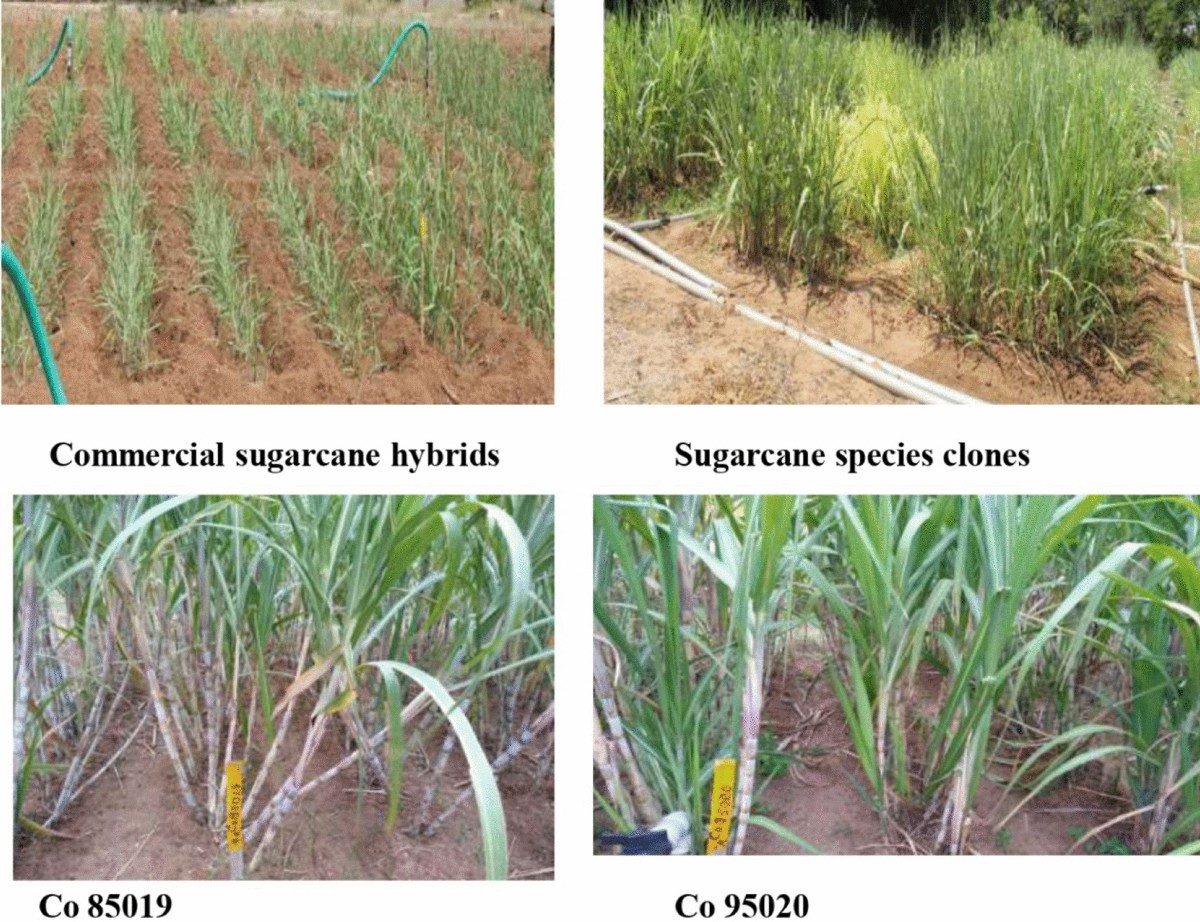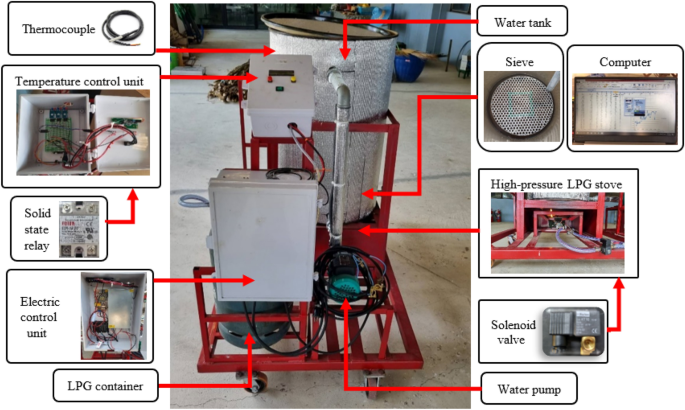Discover the Innovative Benefits of Products From Sugarcane for Sustainable Living
Sugarcane has actually become a critical resource in the pursuit for sustainable living. Its varied applications extend eco-friendly product packaging, eco-friendly energy, and healthier food options. As industries look for green options, sugarcane's convenience supplies appealing remedies. The real possibility of sugarcane expands past its existing uses. Discovering its ingenious benefits can reveal brand-new pathways towards a more sustainable future. What other possibilities might this remarkable plant hold?

The Rise of Sugarcane as a Lasting Source
As global awareness of environmental problems grows, sugarcane has actually become a prominent sustainable resource. This functional crop provides an array of advantages that add to green practices. Sugarcane is a sustainable source, efficient in flourishing in diverse environments while absorbing co2, therefore alleviating greenhouse gas emissions. Its rapid growth cycle enables constant harvesting, causing a constant supply of raw material.Additionally, sugarcane cultivation commonly calls for much less water compared to various other crops, making it a reliable alternative in water-scarce regions. The by-products of sugarcane, such as bagasse and molasses, can be repurposed for different applications, reducing waste and advertising circular economy concepts. Improvements in agricultural methods have led to more sustainable farming methods, even more enhancing sugarcane's environmental account. As consumers increasingly look for lasting choices, sugarcane attracts attention as a sensible alternative for those devoted to lowering their environmental impact.
Eco-friendly Product Packaging Solutions
Just how can eco-friendly packaging remedies change the means customers come close to sustainability? By utilizing sugarcane-based materials, these ingenious options use a compelling alternative to traditional plastics. Biodegradable packaging made from sugarcane decomposes naturally, significantly lowering garbage dump waste and greenhouse gas discharges. As consumers come to be progressively familiar with their ecological effect, the demand for lasting packaging continues to rise.These sugarcane-derived products not only offer useful purposes yet additionally align with eco-conscious customer values. They provide a tangible method for businesses and people to add to a circular economy, advertising source performance and reducing environmental footprints. In addition, as industries adopt naturally degradable alternatives, they promote a society of sustainability that reverberates with an expanding group looking for responsible choices.In essence, naturally degradable packaging services from sugarcane represent an essential advance in lasting methods, encouraging customers to make eco-friendly decisions without compromising ease or quality.
Renewable Resource Generation From Sugarcane
A significant section of renewable energy generation can be originated from sugarcane, showcasing its flexibility past conventional farming uses. Sugarcane biomass, consisting of bagasse and leaves, is a powerful resource for bioenergy manufacturing. This biomass can be exchanged biofuels such as ethanol, which serves as a cleaner option to nonrenewable fuel sources. Additionally, the combustion of sugarcane by-products produces heavy steam and electricity, offering an energy source for sugar mills and neighboring communities.The cultivation of sugarcane also adds to carbon sequestration, as the plants take in carbon dioxide throughout their growth cycle. By using sugarcane for power, waste is lessened, and lasting methods are motivated. This renewable energy method not just sustains power requirements but likewise promotes rural development, producing work in bioenergy markets. In general, sugarcane stands out as a principal in the shift to lasting energy services, aligning with worldwide efforts to lower carbon footprints.

Eco-Friendly Textiles and Fabrics
Environmentally friendly fabrics and fabrics originated from sugarcane offer an encouraging alternative to standard materials. These biodegradable options not just minimize environmental impact however additionally use sturdiness and performance similar to conventional fabrics. Lasting manufacturing procedures further improve their allure, making them an important component of a sustainable way of living.
Naturally Degradable Fabric Choices
Why is the adjustment towards biodegradable textile choices important for lasting living? The boosting recognition of environmental degradation has actually prompted a look for options to conventional fabrics, which usually add to air pollution and waste. Biodegradable fabrics, originated from renewable energies such as sugarcane, use an encouraging solution. These materials break down naturally, minimizing land fill accumulation and reducing environmental influence. In addition, they can aid lower carbon footprints and dependence on nonrenewable fuel sources. As customers become a lot more eco-conscious, the demand for sustainable textiles grows, motivating makers to introduce and invest in naturally degradable options. This change not only supports sustainable methods however likewise promotes a circular economic climate, leading the way for a more responsible approach to style and fabric production.
Resilience and Performance
Longevity and performance are important aspects when evaluating green textiles and materials. Sugarcane-derived products demonstrate remarkable strength and durability, making them appropriate for different applications. These textiles usually show remarkable moisture-wicking residential properties, which enhance comfort in day-to-day wear. In addition, their all-natural fibers add to breathability, making sure that garments stay fresh and wearable even in demanding problems. The performance of sugarcane-based fabrics includes their resistance to deterioration, enabling products to preserve their integrity gradually. These green textiles can be dealt with to enhance UV security and tarnish resistance, fulfilling the functional needs of consumers without endangering sustainability. Ultimately, sugarcane textiles provide an unified equilibrium of durability and performance, interesting ecologically mindful people.
Sustainable Production Processes
The remarkable resilience and performance of sugarcane-derived fabrics are complemented by sustainable production procedures that prioritize environmental duty. These procedures use you could try here eco-friendly resources, lessening dependence on nonrenewable fuel sources and minimizing carbon footprints. By using the spin-offs of sugarcane growing, manufacturers can produce eco-friendly fabrics while advertising waste decrease. Advanced methods, such as water-efficient dyeing and biodegradable treatments, better boost the sustainability of these fabrics. Furthermore, making use of non-toxic chemicals assurances that the production process does not damage ecosystems or human health. This dedication to sustainability not just charms to environmentally conscious consumers yet likewise supports neighborhood economic situations by promoting lasting farming methods. Overall, sugarcane-derived textiles represent a significant step towards a greener future in the garment industry.
Sugarcane-Based Biofuels and Their Impact

Sugarcane-based great site biofuels have actually emerged as a substantial alternative power source, offering a sustainable service to the globe's growing power needs. These biofuels, originated from the fermentation of sugarcane juice or molasses, offer a more lasting alternative compared to nonrenewable fuel sources. Their manufacturing process generates lower greenhouse gas discharges, adding to climate adjustment reduction efforts.Additionally, sugarcane biofuels can enhance energy protection by branching out power sources and decreasing dependence on imported oil. The farming of sugarcane also promotes rural growth, developing jobs and boosting local economies.However, issues regarding land usage and food competition continue, as boosted biofuel manufacturing might affect food supply chains. Lasting farming practices are vital to balancing these ensuring and competing passions that biofuel production does not threaten food security. Overall, sugarcane-based biofuels stand for a promising opportunity for a greener power future, provided that their environmental and social implications are thoroughly taken care of.
Healthier Alternatives: Sugarcane in Food Products
While numerous customers seek much healthier alternatives in their diet regimens, sugarcane items supply a healthy choice to improved sugars and man-made sugar. Stemmed from the all-natural extraction of sugarcane juice, these items maintain necessary nutrients, consisting of minerals and vitamins, that are frequently shed in refined sugars. Sugarcane consists of anti-oxidants and dietary fiber, adding to overall health and wellness and wellness.Many health-conscious individuals are turning to sugarcane syrup and jaggery, which give a reduced glycemic index compared to traditional sugars, making them suitable for those handling blood glucose levels. Additionally, sugarcane-derived sugar can improve the flavor of numerous meals without the unfavorable effects connected with man-made additives.This change in the direction of all-natural artificial sweetener not only advertises much better dietary selections however also lines up with sustainable living practices, as sugarcane is an eco-friendly source. Sugarcane items are emerging as favorable alternatives in the domain name of food items.
The Future of Sugarcane in Sustainable Innovations
The future of sugarcane is positioned to encompass innovative applications that extend past traditional uses. Its possible as a source for eco-friendly product packaging services and renewable energy sources highlights its role in lasting methods. Exploring these innovations can significantly affect environmental conservation and resource management.
Naturally Degradable Packaging Solutions
A raising variety of companies are turning to eco-friendly packaging options stemmed from sugarcane as a promising alternative to standard plastics. These cutting-edge materials, usually made from sugarcane fibers and bioplastics, decay normally, reducing the durable environmental influence connected with conventional plastic waste. By using eco-friendly sources, sugarcane-based product packaging contributes to a much more sustainable manufacturing cycle, aligning with global efforts to combat contamination and environment modification. In addition, these remedies typically preserve the durability and functionality needed for numerous applications, from food containers to delivery materials. As consumer demand for green choices expands, services taking on sugarcane product packaging not just improve their brand image but also play a pivotal function in promoting a circular economy, leading the way for a greener future.
Renewable Resource Sources
Eco-friendly product packaging solutions are simply one element of the broader capacity of sugarcane in promoting sustainability. One more significant application hinges on renewable resource sources. Sugarcane is a functional crop that can be used to produce biofuels, such as ethanol, which works as a cleaner choice to fossil fuels. The fermentation procedure of sugarcane juice returns ethanol that can power lorries and generate redirected here electrical power. Additionally, the by-products of sugarcane handling, like bagasse, can be used to create biomass energy, supplying a lasting and reliable approach to harness energy. This dual role as both a resource of biofuel and biomass highlights sugarcane's possibility in minimizing carbon emissions and sustaining a change to a more lasting energy landscape in the future.
Regularly Asked Concerns
Just How Is Sugarcane Gathered Sustainably?
Sugarcane harvesting can be lasting with techniques like hand-operated cutting, which lessens dirt interruption, and utilizing equipment that decreases gas consumption (Products From Sugarcane). Plant rotation and incorporated insect administration further enhance ecological health and promote lasting dirt fertility
What Are the Environmental Influences of Sugarcane Farming?

Can Sugarcane Products Be Reused?
The question of whether sugarcane products can be recycled discloses a favorable outlook. Many sugarcane-derived products, such as bioplastics and product packaging, are created for recyclability, adding to an extra lasting waste administration strategy within environmental considerations.
Exist Any Kind Of Downsides to Making Use Of Sugarcane-Based Products?
The downsides of making use of sugarcane-based items consist of prospective land use competition with food crops, difficulties in large-scale production, and concerns regarding the ecological effect of monoculture farming methods, which can lessen biodiversity and soil health and wellness.
Just How Does Sugarcane Farming Affect Local Communities?
Sugarcane farming effects regional communities by giving work opportunities and improving local economic climates. However, it can likewise result in land disputes and ecological issues, influencing farming methods and neighborhood health and wellness, requiring a balanced strategy to growth. Innovations in agricultural practices have led to more lasting farming techniques, additionally improving sugarcane's ecological account. Additionally, the burning of sugarcane byproducts produces steam and electrical energy, offering a power source for sugar mills and close-by communities.The cultivation of sugarcane likewise contributes to carbon sequestration, as the plants take in carbon dioxide throughout their development cycle. By utilizing sugarcane for energy, waste is minimized, and sustainable practices are motivated - Products From Sugarcane. Sugarcane contains antioxidants and nutritional fiber, adding to overall health and wellness and wellness.Many health-conscious people are turning to sugarcane syrup and jaggery, which supply a reduced glycemic index compared to traditional sugars, making them ideal for those taking care of blood sugar degrees. In addition, the byproducts of sugarcane processing, like bagasse, can be made use of to generate biomass power, providing a lasting and effective method to harness energy